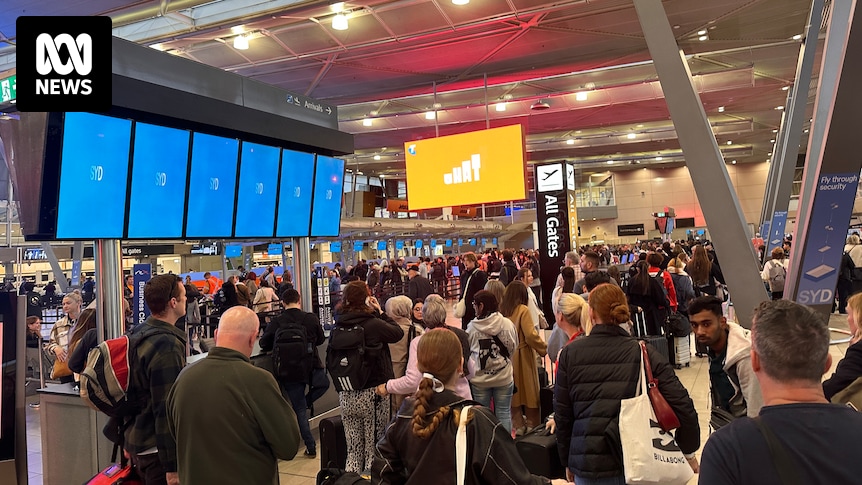All our servers and company laptops went down at pretty much the same time. Laptops have been bootlooping to blue screen of death. It’s all very exciting, personally, as someone not responsible for fixing it.
Apparently caused by a bad CrowdStrike update.
Edit: now being told we (who almost all generally work from home) need to come into the office Monday as they can only apply the fix in-person. We’ll see if that changes over the weekend…
Interesting how ARPA net (the internet) was build to with stand these issues, but companies like Microsoft and Amazon (and no regulation) have completely reversed it’s original intent. I actually didn’t even notice this since I use Lemmy, and have my own internal network running home assistant, synology, emby, ect…
deleted by creator
Probably because it’s a Crowdstrike issue, they’ve pushed a bad update.
deleted by creator
AFAICT Microsoft is busy placing ads on everything and screen logging user activity instead of making a resilient foundation.
For contrast: I’ve been running Fedora Atomic. I’m sure it is possible to add some kernel mod that completely breaks the system. But if there was a crash on boot, in most situations, I’d be able to roll back to the last working version of everything.
banks wouldn’t use something that black box. just trust me bro wouldn’t be a good pitch
If you trust banks that much, I have very bad news for you.
It’s not just Windows, it’s affecting services that people that primarily use other OS’s rely on, like Outlook or Federated login.
In these situations, blame isn’t a thing, because everyone knows that a LSE can happen to anyone at any time. The second you start to throw stones, people will throw them back when something inevitably goes wrong.
While I do fundamentally agree with you, and believe that the correct outcome should be “how do we improve things so that this never happens again”, it’s hard to attach blame to Microsoft when they’re the ones that have to triage and ensure that communication is met.
deleted by creator
Stop running production services on M$. There is a better backend OS.
I’m so exhausted… This is madness. As a Linux user I’ve busy all day telling people with bricked PCs that Linux is better but there are just so many. It never ends. I think this is outage is going to keep me busy all weekend.
Windows moment 🤣
Why do people run windows servers when Linux exists, it’s literally a no brainer.
I see a lot of hate ITT on kernel-level EDRs, which I wouldn’t say they deserve. Sure, for your own use, an AV is sufficient and you don’t need an EDR, but they make a world of difference. I work in cybersecurity doing Red Teamings, so my job is mostly about bypassing such solutions and making malware/actions within the network that avoids being detected by it as much as possible, and ever since EDRs started getting popular, my job got several leagues harder.
The advantage of EDRs in comparison to AVs is that they can catch 0-days. AV will just look for signatures, a known pieces or snippets of malware code. EDR, on the other hand, looks for sequences of actions a process does, by scanning memory, logs and hooking syscalls. So, if for example you would make an entirely custom program that allocates memory as Read-Write-Execute, then load a crypto dll, unencrypt something into such memory, and then call a thread spawn syscall to spawn a thread on another process that runs it, and EDR would correlate such actions and get suspicious, while for regular AV, the code would probably look ok. Some EDRs even watch network packets and can catch suspicious communication, such as port scanning, large data extraction, or C2 communication.
Sure, in an ideal world, you would have users that never run malware, and network that is impenetrable. But you still get at avarage few % of people running random binaries that came from phishing attempts, or around 50% people that fall for vishing attacks in your company. Having an EDR increases your chances to avoid such attack almost exponentionally, and I would say that the advantage it gives to EDRs that they are kernel-level is well worth it.
I’m not defending CrowdStrike, they did mess up to the point where I bet that the amount of damages they caused worldwide is nowhere near the amount damages all cyberattacks they prevented would cause in total. But hating on kernel-level EDRs in general isn’t warranted here.
Kernel-level anti-cheat, on the other hand, can go burn in hell, and I hope that something similar will eventually happen with one of them. Fuck kernel level anti-cheats.
Everyone is assuming it’s some intern pushing a release out accidentally or a lack of QA but Microsoft also pushed out July security updates that have been causing bsods on the 9th(?). These aren’t optional either.
What’s the likelihood that the CS file was tested on devices that hadn’t got the latest windows security update and it was an unholy union of both those things that’s caused this meltdown. The timelines do potentially line up when you consider your average agile delivery cadence.
I’m used to IT doing a lot of their work on the weekends as to not impact operations.
Good ol microsloth
Meanwhile Kaspersky: *thinks if so incompetent people can even make antivirus at all*
Some intern is getting their ass beat right now, never release into prod without extensive test.
lol

too bad me posting this will bump the comment count though. maybe we should try to keep the vote count to 404
https://www.theregister.com/ has a series of articles on what’s going on technically.
Latest advice…
There is a faulty channel file, so not quite an update. There is a workaround…
-
Boot Windows into Safe Mode or WRE.
-
Go to C:\Windows\System32\drivers\CrowdStrike
-
Locate and delete file matching “C-00000291*.sys”
-
Boot normally.
-
Linux and Mac just got free advertisment.








